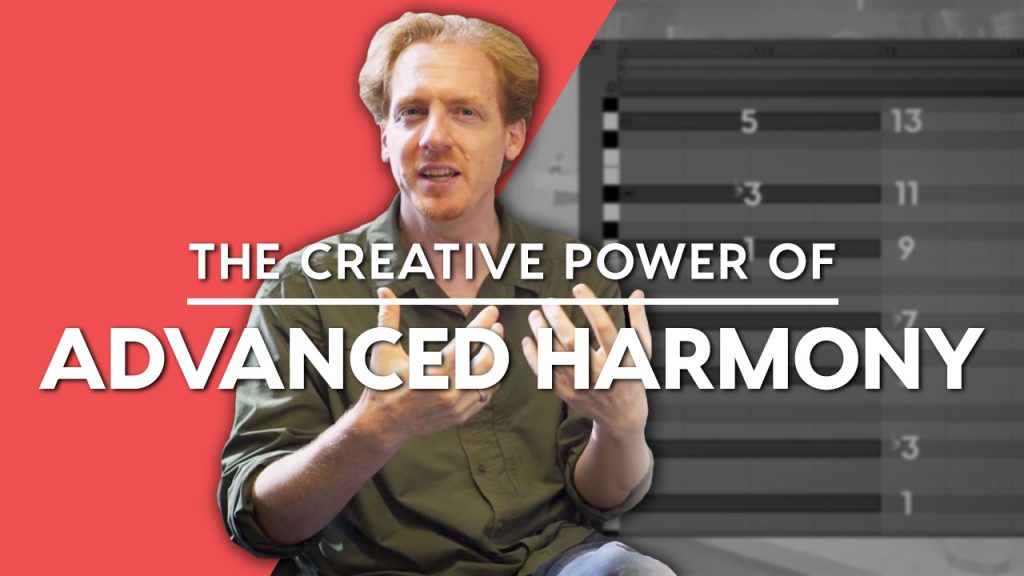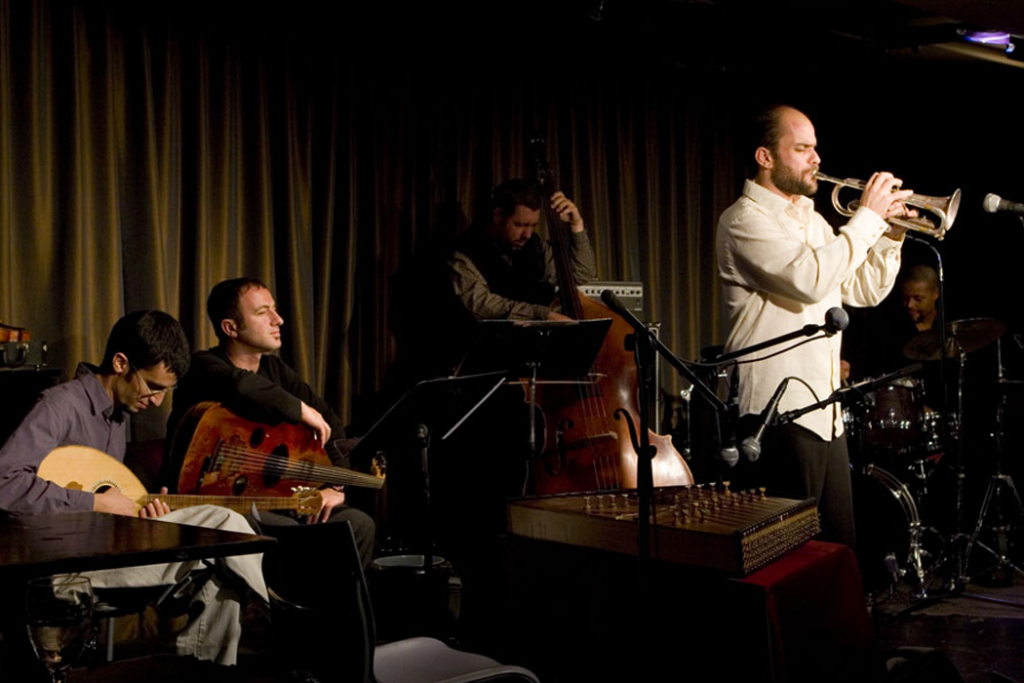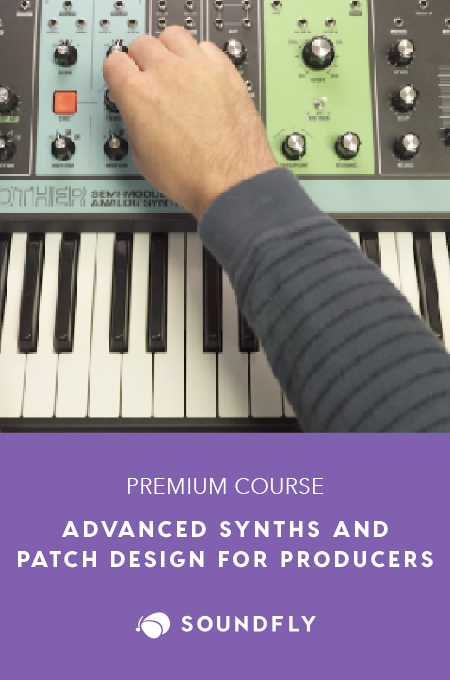+ Take your modern jazz piano and hip-hop beat making to new heights with Soundfly’s new course, Elijah Fox: Impressionist Piano & Production!
By Lee Dynes
The sound palette of Arabic, Persian, and various Middle Eastern regional cultures are generally not typically heard in the West outside of TV shows like Homeland and some films. Those droning tones, the anguished cries reminiscent of classical singers like Oum Kalthoum of Egypt or Yusuf Omar of Iraq, can evoke uneasy feelings of the unknown, especially when heard in the context of today’s Islamophobic rhetoric. In fact, as an emotive device used by these shows to create anxiety, that sound works really well on Western audiences.
The unknown languages (Arabic, Urdu, Farsi, Turkish, etc.), the takht ensemble (featuring instruments like the oud, qanun, and riqq), and the other-worldly sounds of maqam sends people’s head spinning. Maqam are the musical scales or modes used in music from the Middle East that feature tones between Western notes on the piano or guitar, called quarter-tones.
Usage of different maqamat can actually be traced back to antiquity and are thought to have been used in some of the first recitations of the Quran. While these sounds may be unknown to most in the West, in the East they’ve been the backbone of the most significant artistic and cultural movements, similar to how the 12-bar-blues progression has made up the backbone of rock music in America.
Back to Homeland briefly. The soundtrack to the series, composed by Sean Callery, is actually well-known for its use of jazz in the show, appearing as both diegetic and non-diegetic music. But this music is mostly anchored in Western melodic and harmonic language. Let’s explore some jazz artists who have been able to incorporate Arabic melodic, rhythmic, and harmonic characteristics into their work more organically.
Hafez Modirzadeh
Hafez Modirzadeh is an American jazz saxophonist and composer. His father was from Iran, and Modirzadeh studied the intricacies of Persian radif (classical music of Iran) for many years. Combining the radif, his saxophone mastery and mid-century modern jazz styles, Modirzadeh created his own philosophical and theoretical approach to playing which he calls “Chromodal Discourse.”
Modirzadeh was originally concerned with utilizing the intricacies of intonation found in the Middle East inside a modern jazz or free jazz setting, but this quickly gave way to a more universal approach. His flexibility and comfort with the tuning systems of both the West and the East have enabled him to engage in a dialogue with any musician he chooses, from Indonesian Gamelan to American jazz, and anything in between.
Although not directly influenced by Ornette Coleman, Modirzadeh notes how Coleman experimented with the same concepts early in his career. The way he played with intonation, most likely influenced initially by the note-bending capabilities of Delta blues musicians, offers a distinct parallel to Modirzadeh’s work with radif.
Segâh is a Persian musical mode featuring an interval of a Western third flattened by a quarter tone (approximately 50 cents). It has also been found in early blues and the various indigenous music across Africa, Indonesia, Vietnam, and all over the world. The segâh interval is a symmetrical division of a fifth or a “split-fifth” as Modirzadeh calls it. There are also split-fourths and split-thirds, hidden from our Western ears and eyes.
The mystery and power of symmetry is as old as the pyramids, and Modirzadeh has successfully leveled the playing field of our worldly musical consciousness by puncturing the equilibrium of Western 12-tone equal temperament. This isn’t just a fancy idea. It’s an example of a musician who’s striving to renew the humanity in an art form, seeking to bring cultures, art, and thought together in a system that balances alternative forms of harmony and philosophy.
On his most recent recording Post-Chromodal Out!, you can find these concepts fleshed out to a radical extent. Featuring trumpeter Amir ElSaffar (below) and pianist Vijay Iyer, two musicians also part of the same “continuum,” the compositions and improvisations on this recording truly transport the listener to a place where future and past seem to co-exist.
Modirzadeh and Iyer address the problem of Western tuning in equal temperament by re-tuning the piano to one devised by Modirzadeh that incorporates Persian tones; not always quarter-tones, but involving some slightly larger half-steps and smaller whole steps. Listen to how this plays out in the video above when Iyer takes his solo.
+ Read more on Flypaper: “Uncovering the Jazz Influence in Pop, Rock, and Hip-Hop Classics”
Amir ElSaffar
The son of Iraqi immigrants, Amir ElSaffar is a young, masterful trumpeter who has worked with Modirzadeh, among many other contemporary greats, and developed his own take on the discourse between the Iraqi maqam and American jazz. His instrumental repertoire also includes the Iraqi santur, an instrument played like a hammered dulcimer but indigenous to Iraqi music. Iraqi maqam and Persian radif share similar principals of melodic development, microtonal inflections, and subtleties of tuning, but they’re very different in actual practice.
Persian music uses scales called dastgah, while Iraqi music uses the Arab-Turkish maqam. Iraq has a long history of master vocalists who gathered in the cultural epicenter of Baghdad. They would meet to discuss, at great length, the poems that were to be sung during their performances, which often lasted for hours to entertain both elite audiences and common people alike.
ElSaffar traveled to Baghdad multiple times to study the santur and its musical language, absorbing the traditional teachings of the masters of maqam. He has been relentless in his pursuit of quality art music, producing multiple recordings each year and collaborating with many of New York’s top jazz, avant-garde, and world music artists. The results he achieves through these collaborations is as varied as the artists with whom he works, ranging from abstract modern jazz to tracks that sound closer to traditional Middle Eastern music played on Western instruments.
As is the case with Hafez Modirzadeh, ElSaffar has used his in-depth knowledge of another musical world to create an elastic palette from which to craft new forms of music. Yet, his compositions are as relevant to the American musical vernacular as anything else, and his trumpet work is just as dazzling.
ElSaffar’s ability to play shades of microtones on every note at high velocity is nothing short of spectacular. A recent project of his called “Crisis” (featured in the video above), which meditates on conflicts with the Middle East and America, is particularly apropos given our current sociopolitical climate.

Dr. Lloyd Miller
Here’s a shocker. In 1968, an intriguing album was released called Oriental Jazz by a white guy named Lloyd Miller and the “Press Keys Quartet.” Ever heard of him? Or them? Didn’t think so.
To this day, there’s barely any information available on the web about Miller. We do know that Lloyd Miller was born in 1938 and is a prodigious multi-instrumentalist, improviser, and composer within multiple genres. He could play almost 100 instruments in 30 different styles — including, but not limited to, clarinet, oud, piano, guitar, Persian santur, upright bass, the ney flute, and many more — and speak several languages fluently. He also hosted a primetime music and arts variety TV show in Tehran, Iran, in the 1970s where he was known by the name Kurosh Ali Khan. He is truly an enigma.
Having received his doctorate in Middle East Studies, Miller is known for his research work on Persian and Afghan music. He also plays straight-ahead jazz, Indonesian Gamelan music, and Indian music among other styles. His mix-and-match approach to reconciling the vast influence of the Middle East, India, and the Far East was way ahead of its time. What’s really important to keep in mind here is the fact that Lloyd Miller was one man capable of doing the work of fifty men.
For example, this wacky video below starts with Miller playing the oud solo in a Turkish folk style complete with the fast ornaments that accompany any traditional performance of a melody. Then, he simply puts the oud down, picks up a clarinet, and a full jazz ensemble proceeds to play a swinging “My Favorite Things”-type tune. Later in this same video, Miller can be seen combining the oud with a jazz ensemble to suggest his interest in fusing the two.
+ Read more on Flypaper: “Rudy Van Gelder: The Optometrist Who Pioneered an Ethos in Record-Making”
Miller is a fluent piano player as well, often mediating between the styles of Bill Evans or Red Garland, for example, and playing in the idiosyncratic Persian tunings of radif, which come with their own performative actions. This style of playing differs greatly from the Western style in its physicality; many melodies are played with one finger on one hand and another finger on the other hand, flicking ornamental notes in a rapid succession.
Miller’s approach seems more like a mix and match between cultural and musical identities, almost like flipping channels on a TV, but he does incorporate some fusion. Modirzadeh and ElSaffar have strived to create singular, new universal languages, building bridges between language, people, and culture. Miller, on the other hand, put 30 languages up next to each other and would code-switch fluently in front of our eyes (and ears). His thirst for knowledge of other cultures is perhaps something we can all learn from today and may have somehow paved the way for musicians like Modirzadeh and ElSaffar to break new ground.
Play Your Heart Out!
Continue your learning adventure on Soundfly with modern, creative courses on songwriting, mixing, production, composing, synths, beats, and more by artists like Kiefer, Kimbra, Com Truise, Jlin, Ryan Lott, RJD2, and our newly launched Elijah Fox: Impressionist Piano & Production.
—
Lee Dynes is a professional oud player, guitarist, composer, and music educator. He currently resides in the San Francisco Bay Area, where he teaches at Marin Music Center in Novato, CA. At a young age, Dynes began studying jazz guitar, and has studied Hindustani Classical Music, Middle-Eastern music, the folk music of America, Ireland, and Scotland, as well as the music of West Africa, and the Caribbean. Dynes has spent the last 6 years teaching music at elementary, high school, and college levels, and just independently released an album of original music called Pathways.




